Welcome back for part two of our working from home/office posture series!
Now that we have a realistic or ideal workstation set-up, what positive behavior changes can we make to feel better?
Screen Time
Most jobs require some amount of screen time throughout
the day. Whether that is checking emails, typing up documents or reports,
analyzing data on the computer, back-to-back Zoom meetings, the list goes on
and on!

I am sure that you have experienced eye-fatigue after a long day of staring at the computer, in some way or another. Here is an easy rule of thumb to keep in mind throughout your day:
- 20/20/20 Rule: Every 20 minutes, give your eyes a 20 second break by looking at something at least 20 feet away from your screen.
Microbreaks
You may be asking yourself—what is a microbreak? Simply speaking, it is a short 2-5-minute activity that you can do every 30-60 minutes, or whenever your schedule allows, to take a break and perform movements that will counteract your desk-posture. See below for examples and their benefits:
-
Chin-tucks: Basically, you will be making a double chin, sliding your head directly back (not down). Great for those of us that suffer from forward head posture. This can also be done in the car when stopped at a stoplight!

Neck rolls: Gently tuck your chin down to your chest and roll your neck side to side; adjusting the angle of your head will address different muscles in your neck. This is great to help loosen up tight neck muscles that can get kinked-up in the morning after sleeping or throughout the day as we hold tension in our necks.
Backward shoulder rolls: Rolling your shoulders up, back, and then down helps to warm-up our muscles, reset our posture and settle back into a more relaxed position.
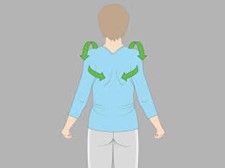
W's (scapular squeezes): Starting with good posture, simply squeeze your shoulder blades in toward your spine, repeating for approx. 20 seconds. This wakes up and activates those muscles that support our posture.

Cat/cow: One of my most-loved yoga movements that increases mobility in the spine and encourages your body to settle into more of a neutral position.
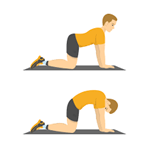
Hamstring scoops: Sitting at your desks all day with knees bent can lead to tight hamstrings. Tight hamstrings are a huge culprit in low back pain and adding this movement to a daily routine will help mobilize nerves, muscles, and fascia in the back of the legs.
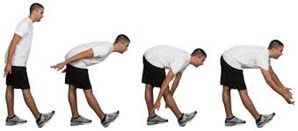
Torso twists: Another great movement pattern to increase spine mobility. It is important to be cautious with this movement and avoid torqueing at your knee; instead, pivot on your toes as you twist to protect those knees!
**I like
to say that movement is WD-40 for our joints; intentional, deliberate movement
helps lubricate our joints to help increase blood flow and reduce stiffness!
Self-Care
I know that in recent years, the term "self-care" has become a treat-yourself trendy buzzword. But self-care 100% has a place in the workplace! Here are some examples of self-care that you can do to relieve muscle soreness, mental fatigue, and to take care of YOU after spending hours checking off the old to-do's:
Self-massage: Massage is a common and well-known method that reduces tension in our body. A lot of people may not have the time in their busy schedule to book a professional massage, but there are tools that make massaging your muscles on your own possible and easy!
- Foam Rolling: Using your own body weight, applying pressure through the foam roller to reduce tension in muscles.
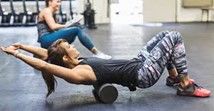
- Lacrosse ball myofascial release: The smaller shape of the ball can be used to focus the massage on more precise areas such as knots/trigger points.
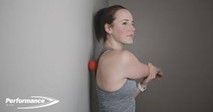
- Tigertail/stick-roller: Simply speaking, it is a rolling pin for your muscles, and it is pretty much a hand-held foam roller. Great for massaging calves, quads, and IT bands!
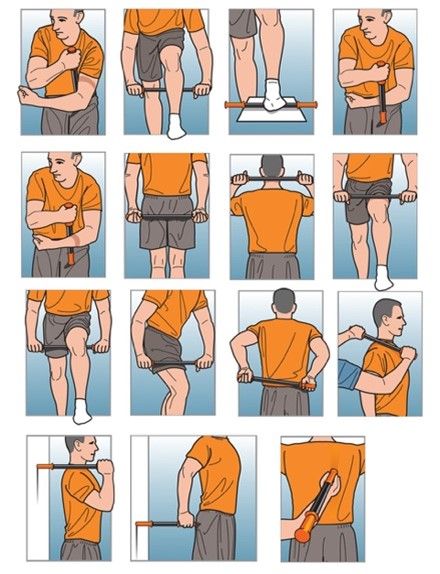
- Theracane/back massaging hook: A funky-looking tool to reach your own back with handles that make it easy to apply pressure. There is a wide variety available to purchase online!
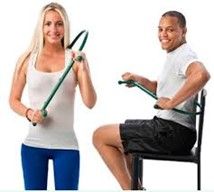
**Avoid
rolling/applying pressure directly over your spine and other bony protrusions
or prominences. This technique is for your MUSCLES, not bones!
Mobility: Mobility is essentially our body's
overall flexibility and ability to adapt to changes in position; these are some
common areas with corresponding exercises that most people can improve upon:
- Open books and thoracic mobility: Increasing our spine's rotational ability.
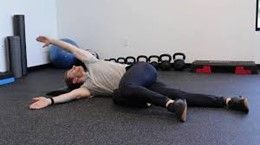
- Cat/cow and spine mobility: As seen above.
- Hamstrings and hips mobility: These muscles attach to our pelvis, which attaches to our spine and can influence low back pain.

- Shoulders and chest opening: Tight chest and shoulder muscles can lead to upper cross syndrome (contributing to neck and shoulder pain)

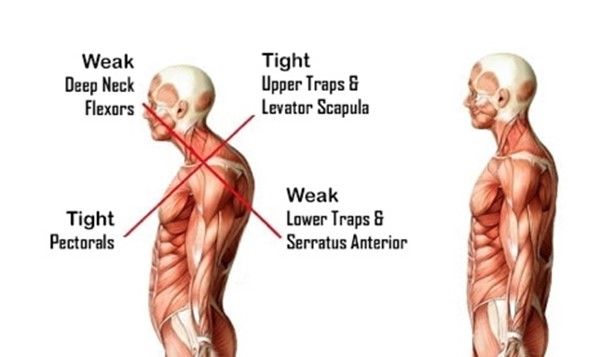
**Increased mobility
= increased range of motion = less likely to be injured
Brain/mind: It is vital not to forget about
mental and emotional well-being when talking about self-care. Stress leads to a
variety of health concerns, but today I will simply highlight the impact that
it can have on overall focus and mental clarity during the workday.
Mindfulness: Focus on being fully present on the task at hand. In times
of overwhelm, pause and become aware of your surroundings, your body's
sensations (maybe you are tense and would benefit from a microbreak), or simply
acknowledge current thoughts or feelings.
Meditation: Incorporating regular
meditation practice can boost productivity, reduce stress/burnout, and improve
focus throughout the workday.
Deep Breathing: If the first two
techniques feel intimidating to start, simply focus on intentionally taking
slower, deeper breaths.
**These techniques can be infused into your day as your
schedule allows. If your schedule is more rigid, try adding them to your
morning routine before starting work for the day, or at the end of your workday
as a renewing transition into your personal life.
Hydration
There is a running joke in my life that any time I am
feeling off, whether that is in my body or mind, I say to myself: Just drink
water!
While water obviously does not fix everything, it is
a crucial part of our overall health and wellbeing. If you are not getting
enough water each day, it can exasperate any of the symptoms and issues that I
have mentioned thus far. And once again, here are my tips and reminders for you
all:
- Drink water before coffee. At 6am, I feel like a zombie just trying to make it to my French press, get through the coffee-making process, and I feel a sigh of relief at that first sip. Likewise, throughout the day I am constantly refilling my cup to give me that energy boost to make it through the next task on the list. Try chugging water while your coffee is brewing, that way you are starting out your day with some much-needed hydration after our restorative night of sleep!
- Drink half of your weight in water! Say you weigh 150 pounds, aim for 75 ounces of water. 200 pounds, aim for 100 ounces of water. Etc, etc, etc.
- Keep a water bottle at your desk. Once it is empty, fill 'er back up! Keep the fluids flowing throughout the day to keep you energized. Bonus side effect: you will have frequent bathroom breaks that you can use to rest your brain, eyes, and body from sitting at your desk.
About to Author:

